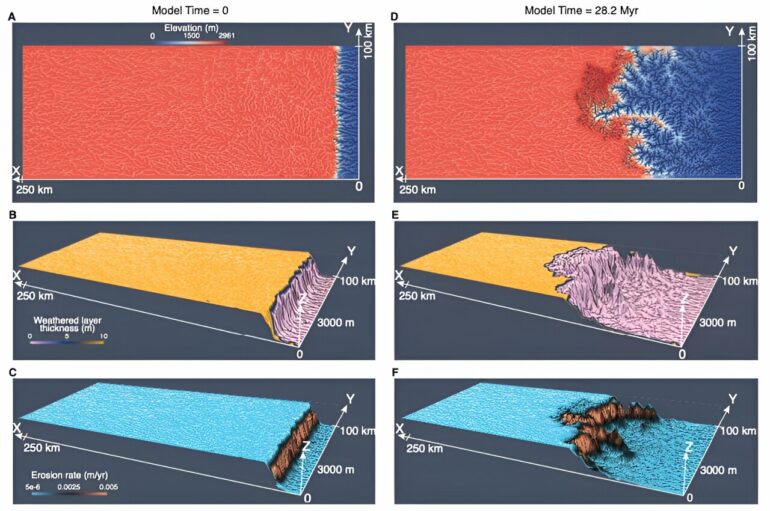Madagascar is home to more than 11,000 plant species, 80% of which are found nowhere else on Earth. A recent study by the Swiss Federal Institute for Forest, Snow and Landscape Research WSL and ETH Zurich has put forward a new hypothesis for the underlying cause of Madagascar’s rich plant biodiversity, which has been regarded as an unsolved mystery of natural history.
Madagascar is a species paradise. As the new study shows, landscape changes caused by non-uniform precipitation and rock erosion play a decisive role in the formation and evolution of new species. Madagascar exhibits a high mountainous escarpment near its east coast, formed during the breakup of the ancient continent of Pangea.
“Precipitation on the eastern side of the island causes the landscape to change dramatically over millions of years as the old escarpment is driven inland,” says Yi Liu, WSL researcher and first author of the study published in Science.
As the escarpment erodes and retreats, new river networks and valleys emerge, creating new habitats and topographical barriers that divide existing habitat. The continuous process of habitat isolation and reconnection accelerates the emergence of new species that adapt to the changing patterns of habitat.
Topography can continue to evolve for a long time
Loïc Pellissier, Professor of Ecosystem and Landscape Evolution at WSL and ETH Zurich, also played a leading role in the study. “The high biodiversity is considered to be mainly due to the shifting of tectonic plates and the resulting formation of a complex topography. However, Madagascar never fit well into this hypothesis, as tectonic activity has been minimal for the last 100 million years,” he says. The new study shows that complex topography can persist and continue to evolve long after the cessation of tectonic activity.
What is notable about this study is that it consolidates many years of work by both biologists and geologists, integrating processes and data into a computer model. “Interdisciplinary collaboration was essential to the project,” says Prof. Sean Willett, one of the co-authors from the ETH Earth Science Department involved with the paper.
The model combines reconstructions of the landscape and species’ habitats from 45 million years ago to the present day with a comprehensive dataset containing about 9,000 plants that occur on the island today. The results of the computer model have shown a direct connection between changes in habitats and the formation of endemic species.
Concerns about the future
According to the researchers, it is now a matter of testing the new findings in other locations with high endemic biodiversity. The theory is already being tested in studies in the mountains of Colombia and southwest China by the same team. “The initial results indicate that landscape changes due to erosion also play a decisive role in endemic biodiversity in these regions,” Pellissier points out.
As much as Yi and Pellissier are pleased by the discovery of the emergence of endemic species, they are both concerned about the future. With deforestation and climate change, the unique flora and fauna of Madagascar are at significant risk.
“Our research shows that landscape evolution took millions of years to form new habitats and thus create new species,” Pellissier emphasizes. “Humans are in the process of destroying biodiversity within a few decades through massive intervention in climate and destruction of natural habitats.”
More information:
Yi Liu et al, Escarpment evolution drives the diversification of the Madagascar flora, Science (2024). DOI: 10.1126/science.adi0833
Provided by
Swiss Federal Institute for Forest, Snow and Landscape Research WSL
Citation:
How landscape evolution makes Madagascar a hotspot for plant species diversity (2024, February 9)



